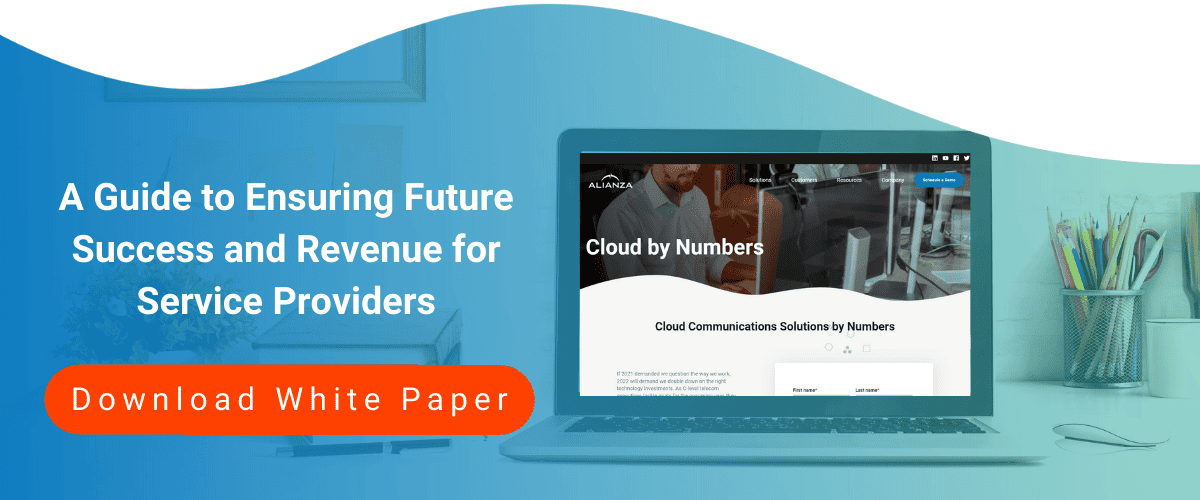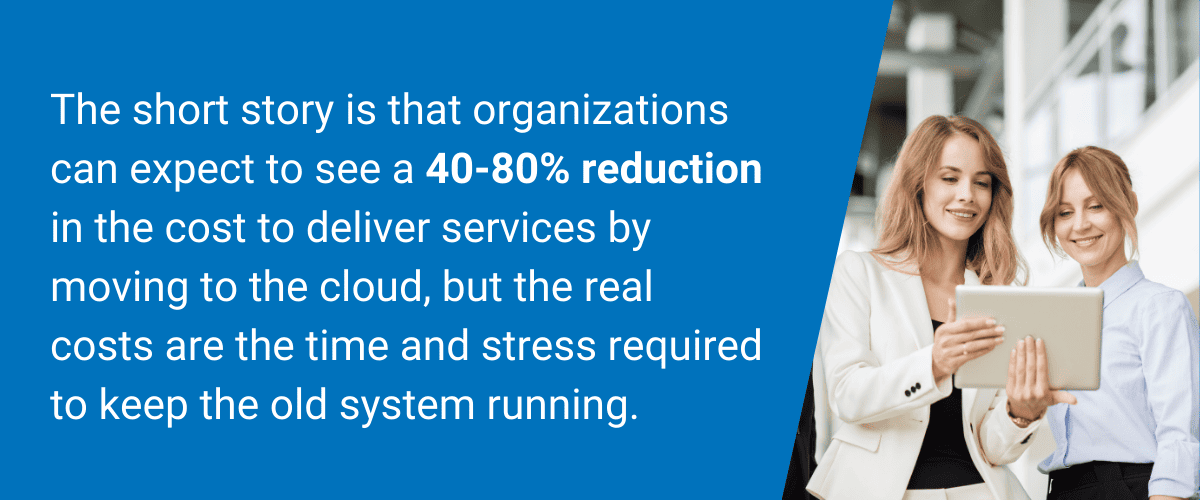
When it comes to determining the ROI of your cloud services, you must measure not only by the speed at which your capital is recouped but also by its forward-looking impact.
Over the years, Alianza has participated in, advised on, and supported countless digital transformations. In helping service providers navigate the entire migration process (shoulder-to-shoulder), we’ve fine-tuned the knowledge needed to deliver a safe migration. Digital transformation isn’t for the faint of heart, but it is a business necessity for all service providers.
If you are planning to do it on your own, it’s not as simple as it sounds. Successful migrations and digital transformations require more effort, coordination, and subject matter excellence that most business leaders recognize. Today’s thought leaders know that success is not as easy as measuring the profit or return on investment (ROI).
Beware Sunk Cost Fallacy When Calculating Your Cloud ROI
Remember the last time you installed a voice services platform? If not, it’s likely because it’s been a while since you added a new platform or new capabilities. And, if you do remember the last migration or rip-and-replace, you’re probably cautious of doing it all again because of how long it took to choose the right one after factoring in the time required to buy all the equipment, stage it, install it, configure it, test it, and launch it. And then there was the cost, the capital spent on ancillary services to make it all work with the public switched telephone network (PSTN), software to integrate it into legacy provisioning and billing applications as well as regulatory costs and requirements.
Despite all the cringe worthy memories this might inspire, those sunk costs are irrelevant when it comes to deciding how to move forward with your network.
What Is the Sunk Cost Fallacy?
This is a term to describe the tendency to believe that just because we have invested time, effort, or money into something, that we should follow through, even if the current costs exceed the benefits.
Financially speaking, capital already spent cannot be recovered. For example, whether you continue to utilize the legacy network or move to the cloud, whatever you spent on softswitch replacements (replacing hardware with hardware) will not be recovered. The sunk cost fallacy means we often go against clear evidence and continue to invest in losing ventures that costs time, money, or effort (or all three) rather than investing new money into an alternative.
Therefore, irrecoverable costs should not be a factor in the decision-making process of network transformation. In finite terms, only future costs and benefits should be considered.
How the Sunk Cost Fallacy Impacts Measuring Your Cloud ROI
Traditional, on-premises telco networks have extensive and varied components — such as end user equipment, cabling, routers, switches, firewalls, call processors, gateways (signaling gateways, media gateways, and media controllers), and more.
Many telecom networks have invested a majority of revenue in their switch, but they’re weighed down by outdated networks, complex infrastructures, and rising maintenance costs. Despite all these drawbacks, if a service provider elects to continue investing, repairing, and patching their legacy systems — like Nortel or Lucent time-division multiplexing (TDM) switches — rather than embracing digital transformation, that is an example of sunk cost fallacy.
The reality is, although your company has invested heavily into your existing system, you can’t get your money back by digging in deeper. Your business doesn’t have to be hamstrung by legacy technology that doesn’t meet the needs of your customers and end users.

As the need for legacy network transformation becomes more pressing for service providers, C-level telecom executives need to evaluate the decision from a cost savings and growth perspective.
Uncover the true value of moving to the cloud in our latest white paper “Cloud Communication Solutions by The Numbers.”

A Cloud ROI Isn’t Only About Investment; It’s About Innovation
Traditionally, an ROI is calculated based on gains – investment / investment. Forbes suggests a more accurate calculation for measuring a digital transformation “without the constraints of an archaic ROI definition” is new value – beginning value / beginning value.
In calculating your cloud ROI, take the following components into account:
Beginning value is the value without a cloud investment.

Declining Margins
As subscriber bases erode with the attrition of landlines to mobile phones, service providers face a drop in revenue while their current cost structure remains fixed, which cuts into their margins.

Aging Switches and Platforms
For switching networks built thirty or forty years ago, it is not only legacy TDM switches that are aging out. Even first-generation VoIP platforms are at or very near to end-of-life.

Compliance and Regulation
It has become challenging to get vendors to support new development and/or compliance with the latest regulatory requirements (e.g., Kari’s Law, RAY BAUM’s Act, and STIR/SHAKEN).

Hardware Replacement Timeline
Capital expenditure for replacing hardware with hardware. Including time, effort, and cost of managing customer expectations, downtime, only to face the same challenges and CAPEX for replacement in another five to seven years.

Aging Workforce
As skilled personnel retire in greater numbers year over year, providers will have an increasingly challenging time locating professionals who have the knowledge needed to manage their legacy networks.

Lack of Support
Many vendors have gone out of business and no longer support older equipment. As systems are discontinued, customers will no longer have vendor support and replacement parts will eventually be depleted.

Reduced OPEX
It’s all covered — cloud provisioning, upgrades, security, enhancements, and maintenance — and there’s no need for your IT team to manage it.

Increased Margins
Service providers can see an average gross margin of 60-76% by leveraging Alianza and seat scalability means your customer growth and margins are in sync.

Deployment Velocity
A completely hands-off IT experience means there is no need to coordinate multi-location deployments, giving you back valuable time.

Reduced TCO
An average of 50% when leveraging Alianza’s cloud platform. The cloud provider owns, controls, and develops new features in a continuous, non-disruptive fashion, so you can take voice to new heights.

Increased Speed to Market
Cloud platforms offer the capabilities to integrate with vital business systems and workflows needed to sell, manage, support, and bill end users — let alone those needed for development, innovation, and scale.

Business Agility
Cloud platforms are built to ensure that service providers have security, network quality, resiliency, and redundancy. Cloud platforms adapts and respond to change with ease in a way on-premises platforms cannot compete with.
Moving to the Cloud: The Economics Couldn’t Be Clearer
Rather than an ROI based solely on capital expenditure investments, this next-gen method of measuring the true ROI of cloud infrastructure enables business leaders and IT executives to more accurately measure and communicate the immense value of digital transformation. As C-level decision makers choose to innovate using the cloud, it transforms not just your cost structure but your entire business.






